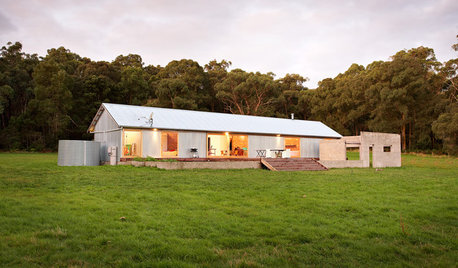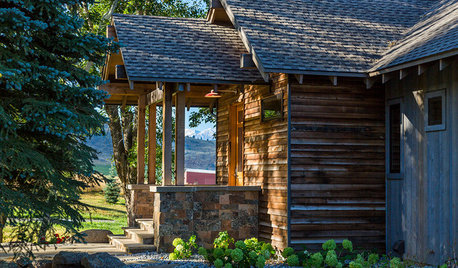Maintaining a pasture
mollymaples
15 years ago
Related Stories

LANDSCAPE DESIGN15 Great Ideas for a Lawn-Free Yard
End the turf war for good with hardscaping, native grasses and ground covers that save water and are easier to maintain
Full Story
ARCHITECTURE6 Shed-Inspired Homes Down Under
These contemporary Australian homes are influenced by the rural shed vernacular, which maintains close ties to the land
Full Story
GREEN BUILDINGHouzz Tour: Going Completely Off the Grid in Nova Scotia
Powered by sunshine and built with salvaged materials, this Canadian home is an experiment for green building practices
Full Story
HOUZZ TOURSHouzz Tour: Wide-Open Views on a Narrow Canadian Lot
Expansive glass walls facing the street create openness, sun-filled rooms and closer relations with the neighbors
Full Story
RUSTIC STYLEHouzz Tour: A Fly Fisher’s Dream Along the Yellowstone River
This new home combines local ranch style with contemporary elements, including energy efficiency
Full Story
FARMHOUSESKitchen of the Week: Renovation Honors New England Farmhouse’s History
Homeowners and their designer embrace a historic kitchen’s quirks while creating a beautiful and functional cooking space
Full Story
GARDENING GUIDES7 Ecofriendly Gardening Ideas That Also Cut Chore Time
Spend less time weeding, less money watering and more moments just sitting back and enjoying your healthy garden
Full Story
SAVING WATERHouzz Call: Are You Letting Go of Your Lawn?
Many facing a drought are swapping turf for less thirsty plantings. If you’re one of them, we’d like to hear about it
Full Story
FARM YOUR YARDHello, Honey: Beekeeping Anywhere for Fun, Food and Good Deeds
We need pollinators, and they increasingly need us too. Here, why and how to be a bee friend
Full Story
GARDENING GUIDESHow to Switch to an Organic Landscape Plan
Ditch the chemicals for a naturally beautiful lawn and garden, using living fertilizers and other nontoxic treatments
Full Story





goodhors
Miss_Kitty
Related Professionals
West Milford Landscape Architects & Landscape Designers · Manhattan Beach Landscape Architects & Landscape Designers · Norton Shores Landscape Architects & Landscape Designers · Galt Landscape Contractors · Laguna Hills Landscape Contractors · Lantana Landscape Contractors · Norwalk Landscape Contractors · San Benito Landscape Contractors · Peoria Fence Contractors · Antelope Fence Contractors · Columbia Fence Contractors · Georgetown Fence Contractors · Zion Fence Contractors · Honolulu Decks, Patios & Outdoor Enclosures · Decks, Patios & Outdoor Enclosuresfancifowl
epaoshaguy
mollymaplesOriginal Author
Miss_Kitty
epaoshaguy
goodhors
Miss_Kitty